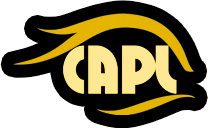Culturally Authentic Pictorial Lexicon
 | |
Type of site | academic |
|---|---|
| Available in |
German French Chinese Spanish ESL |
| Owner | Washington & Jefferson College |
| Created by | Michael R. Shaughnessy |
| Website | http://capl.washjeff.edu/ |
| Registration | no |
| Launched | 2003 |
| Current status | active |
Content license | CC BY-NC-SA 3.0 US |
The Culturally Authentic Pictorial Lexicon is a dictionary database of images of various objects in a culturally authentic setting for language learning. All images are presented with a Creative Commons Attribution-NonCommercial-ShareAlike license, allowing for broad academic use by language teachers.[1] The database is also useful for researchers in the field of applied linguistics, visual cognition, and automated image recognition.[2] The database averages 30,000 hits per month and has been incorporated into the curricula of many college and high-school level German teachers.[3]
The idea for the lexicon is partially based on Shaughnessy's experience with teaching materials that used American-based images and clip art to demonstrate German words and concepts.[4] By presenting objects in their culturally authentic context, the CAPL is designed to prepare students to live in the environment where the language is spoken.[4] The photographic entries are real photographs, not clip art, to force teachers to "teach terms for things that actually occur in everyday German life – instead of American concepts that have no direct European equivalent."[4]
The project was founded in 2003 as a pilot project with over 1,000 unique entries for the German language. The first images were collected by Shaughnessy in Germany and Austria through a grant from W&J College.[1] In 2006, it received a $200,000 appropriation from the U.S. federal government.[5] In 2008, the project was expanded to include more languages thanks to a $85,480 grant from the U.S. Department of Education.[3]
The CAPL was featured in an article in The Chronicle of Higher Education[4] and has been recommended for use by the Goethe Institute, German Academic Exchange Office and the National Capital Language Resource Center.[3] The book The Bilingual Mental Lexicon noted the Culturally Authentic Pictorial Lexicon's value in German language instruction for "naming and sorting activities, and in awareness-raising discussions."[6]
References
- 1 2 "About CAPL". Culturally Authentic Pictorial Lexicon. Washington & Jefferson College.
- ↑ Park, Jane (June 18, 2009). "CAPL, the Culturally Authentic Pictorial Lexicon". creativecommons.org. Creative Commons.
- 1 2 3 "Culturally Authentic Pictorial Lexicon". Fund for the Improvement of Postsecondary Education Grant Database. United States Department of Education. 06/01/2008. Check date values in:
|date=(help) - 1 2 3 4 Read, Brock (December 12, 2003). "Professor's Web Site Uses Photographs to Teach the German Language". The Chronicle of Higher Education.
- ↑ "SENATORS SANTORUM AND SPECTER ANNOUNCE COMMITTEE APPROVAL OF WESTERN PA EDUCATION PROJECTS" (Press release). Office of Senator Arlen Specter. July 24, 2006. Archived from the original on 2006-07-26. Retrieved 2012-08-09.
$200,000 for Washington & Jefferson College in Washington County to support foreign language programs. Funding including the expansion of the Culturally Authentic Pictorial Lexicon (CAPL), an online German-language picture dictionary, that provides undergraduate foreign language teachers and students with a culturally authentic, easy-to-use Web-based learning tool.
- ↑ Pavlenko, Aneta (January 15, 2009). The Bilingual Mental Lexicon. Multilingual Matters. p. 155. ISBN 978-1-84769-124-8.
